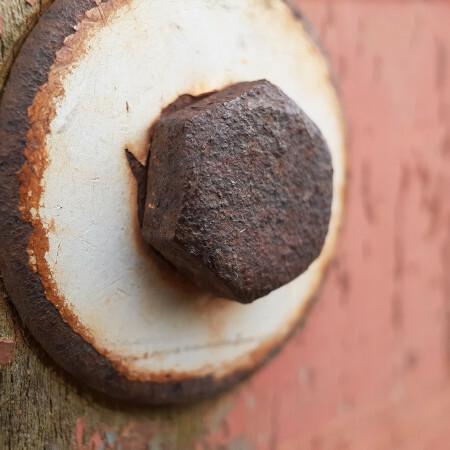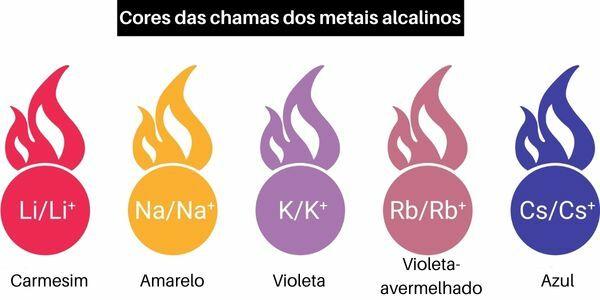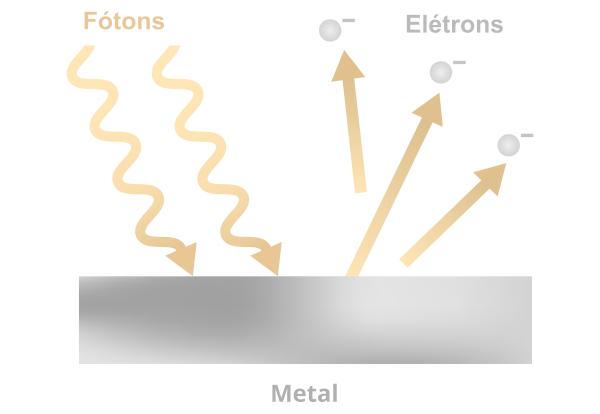To the chemical transformations they are processes of converting a substance into another specific one, regardless of the reagents and mechanisms involved. Unlike what happens in physical transformations, in chemical transformations there is a change in the atomic composition of the substance.
Chemical transformations take place through different chemical processes and are evidenced in different ways. Changes in color, smell, taste or texture may be enough to identify a chemical change, however, in laboratories, more specific techniques are also used to confirm the occurrence of the process chemical.
Read too: Physical and Chemical Phenomena—How Do They Differ?
Topics of this article
- 1 - Summary of chemical transformations
- 2 - What are chemical transformations?
- 3 - Examples of chemical transformations:
-
4 - Types of chemical transformations
- → Addition chemical transformation (or synthesis)
- → Chemical transformation of decomposition (or analysis)
- → Single-replacement (or displacement) chemical transformation
- → Double replacement chemical transformation (or permutation)
- 5 - How to know if there has been a chemical transformation?
- 6 - Solved exercises on chemical transformations
Summary of chemical transformations
- A chemical transformation is a process in which one substrate is converted into another, regardless of the reagents or mechanisms involved.
- In theory, chemical transformation is not synonymous with “chemical reaction”, since a chemical transformation can occur through several reactions, however, most books adopt the terms as synonyms.
- According to the Inorganic chemistryGenerally speaking, there are four types of chemical transformations: addition, decomposition, single replacement, and double replacement.
- Chemical transformations can be evidenced through organoleptic properties, such as changes in color, smell, flavor, texture and chemical tests or instrumental analyses.
Do not stop now... There's more after the publicity ;)
What are chemical transformations?
According to the International Union of Pure and Applied Chemistry (IUPAC), chemical transformation occurs when a substrate converts to a specific product, regardless of other reactants or mechanisms involved.
Although they are treated as synonyms, a chemical reaction is theoretically distinct from a transformation. chemistry, according to IUPAC, this is because a transformation can occur through several reactions many different. For example, in a Fridel-Crafts alkylation, it is possible to transform the benzene in ethylbenzene, using different reagents such as ethene, ethyl chloride or ethanol.
Even so, it is not difficult to see that such terms (transformation and reaction) are treated as synonyms in practice and in books, manuals and articles of Chemical.
Examples of chemical transformations:
- a nail that rusts;
- burning a sheet of paper;
- a food that spoils;
- a wine that turns sour;
- formation of gas in the dough of a cake or bread.

Types of chemical transformations
Here are the types of chemical transformations:
→ Addition chemical transformation (or synthesis)
The chemical transformation of addition (or synthesis) occurs when two or more chemical reactants form a single product. Example:
No2 + 3H2 → 2 NH3
→ Chemical transformation of decomposition (or analysis)
The chemical transformation of decomposition (or analysis) occurs when a single reactant disintegrates into at least two products. Example:
CaCO3 → CaO + CO2
→ Single-replacement (or displacement) chemical transformation
The chemical transformation of simple exchange (or displacement) occurs when a chemical species present in a simple substance manages to displace another chemical species present in a compound substance. Example:
Zn + CuSO4 → ZnSO4 + Cu
→ Double replacement chemical transformation (or permutation)
The chemical transformation of double change (or permutation) occurs when the elements of the reactants exchange with each other. Example:
AgNO3 + HCl → AgCl + HNO3
Know more: Chemical equations — ways to represent chemical processes
How do you know if there has been a chemical change?
In everyday life, we can detect the occurrence of a chemical transformation through smell, taste and color changes.
Other macroscopic aspects that can serve to evidence a chemical transformation are:
- gas formation (effervescence),
- release or absorption of heat (the flask can get warmer or cooler),
- alteration of the texture of the material and formation of solids (precipitates).
However, in laboratories, chemical transformations can be evidenced through qualitative tests. The Baeyer test, for example, developed by the German chemist Adolf von Baeyer, is used to identify whether the product is a alkene or one cycloalkane. In this test, the sample is placed in contact with a violet-colored potassium permanganate solution; in the case of an alkene, there will be a discoloration of the solution and the formation of a brown precipitate, as shown in the following reaction:

In tests of deeper levels, substances can be identified with specific analysis devices. This is the case, for example, with infrared spectroscopy, which is used to qualitatively identify a compound.

Solved exercises on chemical transformations
question 1
(IFG)Consider the following phrase by Carl Gustav Jung: “The meeting of two personalities is similar to the contact of two chemical substances: if any reaction occurs, both undergo a transformation.”. In this sentence, the author relates the meeting of two human beings with the process of chemical reactions and transformations. Of the following processes, select one that cannot be classified as a chemical reaction.
A) Digestion of food.
B) Production of soap from oil and caustic soda.
C) Paper burning.
D) Photosynthesis.
E) Melting of water.
Resolution:
E alternative.
The melting of water is not a chemical reaction, because matter (water) does not change its chemical composition. During melting, the ice just melts, that is, the water changes from the solid state to the liquid state, without changing its chemical composition.
question 2
(UFT) In our daily lives, we live with several processes that are called physical phenomena and chemical phenomena. Physical phenomena are those in which changes in the phase of matter occur without altering its chemical composition. Chemical phenomena are those that occur with a change in the chemical composition of substances. Which of the following contains only chemical phenomena?
A) Formation of rust, rotting of a fruit, burning of steel wool, photosynthesis by plants.
B) Burning of gunpowder, evaporation of water, combustion of gasoline, formation of ice.
C) Clothes drying on the clothesline, food metabolism in our organism, blood centrifugation.
D) Combustion of ethanol, distillation of petroleum, explosion of fireworks, melting of table salt.
E) Formation of frost, drying of clothes, formation of clouds, melting of ice.
Resolution:
Alternative A.
Only in the first alternative can all processes be characterized as chemical transformations. In alternative B, the evaporation of water and the formation of ice are physical phenomena; in alternative C, drying clothes on the clothesline and centrifuging the blood are physical phenomena; in alternative D, the distillation of petroleum and the melting of table salt are physical phenomena; and in alternative E, none of the processes configures a chemical phenomenon.
By Stefano Araujo Novais
Chemistry teacher
See the definition of the basic concepts of Chemistry, such as matter, energy, substance, mixture, body, object, mass, volume and system.
Click here and find out what physical phenomena and chemical phenomena are. Understand the differences that exist between them.
Know the types of reactions that can occur between inorganic substances.
Click to learn everything about inorganic reactions, chemical phenomena that involve the use and formation of inorganic substances.
Learn about the main characteristics of the two main types of transformations of matter: chemical phenomena and physical phenomena!


